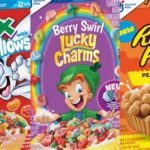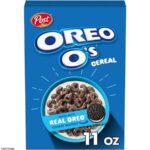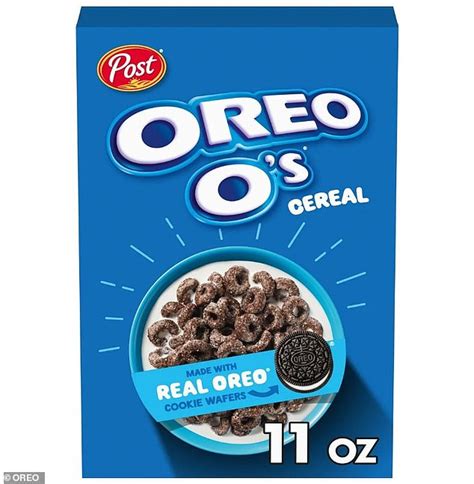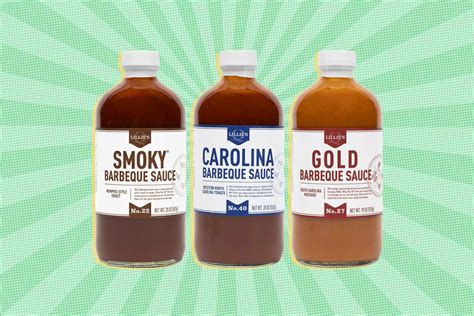
Breakfast tables are about to look a little different as Kellogg’s, the iconic cereal manufacturer, discontinues several popular cereal varieties, leaving fans disappointed and scrambling to stock up on remaining boxes. The move, confirmed this week, will see the departure of beloved flavors like Rice Krispies Treats Cereal, Raisin Bran Toasted Oats, and Special K Oat Crunch Honey.
Kellogg’s decision to cull these cereals from its lineup reflects a strategic shift within the company, driven by factors such as evolving consumer preferences, supply chain efficiencies, and the ongoing quest to optimize shelf space in a competitive market. While the company has not explicitly detailed the specific reasons behind each discontinuation, industry analysts suggest a combination of underperformance in sales, ingredient sourcing challenges, and the need to streamline production lines likely played a role.
“While some consumers may be disappointed to see these cereals leave our lineup, we continually evaluate our portfolio to ensure we are delivering the best possible products for our consumers,” a Kellogg’s spokesperson stated. This statement underscores the delicate balance manufacturers must strike between catering to loyal customers and making tough decisions to maintain overall business viability.
The news has sparked immediate reactions across social media platforms, with dedicated cereal enthusiasts expressing their dismay and fondly recalling memories associated with the soon-to-be-gone flavors. Some are even organizing online campaigns urging Kellogg’s to reconsider the decision, while others are actively searching for remaining boxes in local stores and online retailers.
Discontinued Cereal Varieties: A Closer Look
The three cereals facing the chopping block each hold a unique place in the Kellogg’s portfolio, offering distinct flavors and nutritional profiles. Rice Krispies Treats Cereal, a relatively recent addition, sought to capture the nostalgic appeal of the classic homemade treat in a convenient breakfast format. Its sweet, marshmallowy flavor and crispy texture were a hit with children and adults alike, making its discontinuation particularly surprising to some.
Raisin Bran Toasted Oats represented a healthier option within the cereal aisle, combining the fiber-rich benefits of bran flakes with the added crunch and flavor of toasted oats. It appealed to consumers seeking a more nutritious and satisfying breakfast choice. Special K Oat Crunch Honey provided a similar health-conscious option, featuring a blend of whole grains, oats, and a touch of honey for sweetness. Its discontinuation leaves a gap in the market for those seeking a balanced and flavorful cereal with a focus on whole grains.
Consumer Reaction and Social Media Outcry
The announcement of the cereal discontinuations triggered a wave of emotional responses from consumers, particularly on platforms like Twitter, Facebook, and Reddit. Many expressed feelings of sadness, disappointment, and nostalgia, sharing personal anecdotes about their favorite cereals and the memories associated with them.
“I can’t believe they’re getting rid of Rice Krispies Treats Cereal! It was my go-to breakfast treat,” one Twitter user lamented. Another wrote, “Raisin Bran Toasted Oats was the only cereal I could get my kids to eat. What am I going to do now?”
The online outcry highlights the deep emotional connection that many people have with their favorite breakfast cereals. For some, cereal is more than just a food; it’s a comforting ritual, a reminder of childhood, and a source of simple pleasure. The discontinuation of a beloved cereal can feel like a personal loss, triggering a sense of nostalgia and disappointment.
Several online petitions have emerged, urging Kellogg’s to reverse its decision and bring back the discontinued cereals. While the likelihood of these petitions succeeding is uncertain, they demonstrate the passion and dedication of cereal fans who are unwilling to let their favorite flavors disappear without a fight.
Kellogg’s Strategic Rationale: Market Dynamics and Portfolio Optimization
While the company has not explicitly stated the precise reasons for discontinuing these specific cereals, industry analysts point to several factors that likely influenced the decision. These include:
-
Evolving Consumer Preferences: The breakfast market is constantly evolving, with consumers increasingly seeking healthier, more convenient, and more diverse options. Cereal sales have been declining in recent years as consumers turn to alternatives like yogurt, breakfast bars, and overnight oats. Kellogg’s, like other cereal manufacturers, must adapt to these changing preferences to remain competitive.
-
Supply Chain Efficiencies: The global supply chain has faced numerous challenges in recent years, including disruptions caused by the COVID-19 pandemic, labor shortages, and rising transportation costs. Streamlining production lines and focusing on core products can help manufacturers improve efficiency and reduce costs.
-
Shelf Space Optimization: Supermarkets and grocery stores have limited shelf space, and manufacturers must compete for placement. Kellogg’s likely evaluated the sales performance of each cereal variety and determined that discontinuing certain products would allow them to allocate more space to higher-performing items.
-
Ingredient Sourcing: Specific ingredients used in the discontinued cereals may have become more difficult or expensive to source, impacting profitability.
-
Product Lifecycle: All products have a lifecycle, and some cereals may have simply reached the end of their run. Despite a dedicated fanbase, sales volume may have declined to a point where continued production was no longer economically viable.
The Broader Cereal Market: Trends and Challenges
The cereal market is a mature and highly competitive industry, facing a number of challenges in recent years. These include:
-
Declining Sales: As mentioned earlier, cereal sales have been declining as consumers shift towards alternative breakfast options. This trend is driven by factors such as changing lifestyles, health concerns, and the increasing availability of convenient and nutritious breakfast alternatives.
-
Increased Competition: The cereal market is dominated by a few major players, including Kellogg’s, General Mills, and Post. These companies compete fiercely for market share, constantly innovating and introducing new products to attract consumers. In addition, smaller, independent cereal brands have emerged, offering niche products and catering to specific dietary needs.
-
Health Concerns: Many traditional cereals are high in sugar and processed ingredients, raising concerns about their nutritional value. Consumers are increasingly seeking healthier breakfast options with lower sugar content, higher fiber content, and more natural ingredients.
-
Changing Lifestyles: Busy lifestyles and the increasing prevalence of on-the-go eating habits have led to a decline in traditional sit-down breakfasts. Consumers are looking for quick and easy breakfast options that they can consume while commuting or working.
Kellogg’s Response and Future Strategies
Kellogg’s recognizes the challenges facing the cereal market and is actively adapting its strategies to remain competitive. These include:
-
Innovation: Kellogg’s continues to invest in innovation, developing new cereal varieties that cater to changing consumer preferences. This includes introducing healthier options with lower sugar content, higher fiber content, and more natural ingredients.
-
Convenience: Kellogg’s is also focusing on convenience, offering products that are easy to prepare and consume on the go. This includes breakfast bars, instant cereals, and single-serving cups.
-
Marketing and Branding: Kellogg’s is investing in marketing and branding efforts to promote its products and connect with consumers on an emotional level. This includes using social media, influencer marketing, and traditional advertising channels.
-
Expanding into New Categories: Kellogg’s is also expanding into new food categories beyond cereal, such as snacks, frozen foods, and plant-based meats. This diversification helps to reduce the company’s reliance on the cereal market and provides new growth opportunities.
-
Focus on Sustainability: Kellogg’s is committed to sustainable sourcing and manufacturing practices. The company is working to reduce its environmental impact and promote ethical labor practices throughout its supply chain.
The discontinuation of Rice Krispies Treats Cereal, Raisin Bran Toasted Oats, and Special K Oat Crunch Honey represents a strategic decision by Kellogg’s to optimize its portfolio and adapt to changing market conditions. While these discontinuations may disappoint some consumers, Kellogg’s remains committed to providing a wide range of breakfast options that meet the diverse needs and preferences of its customers. The company’s focus on innovation, convenience, and sustainability will be crucial to its success in the long term.
The Enduring Appeal of Cereal
Despite the challenges facing the cereal market, cereal remains a popular and iconic breakfast food. Its convenience, affordability, and versatility make it a staple in many households. Cereal can be enjoyed with milk, yogurt, or even on its own as a snack. It can be customized with a variety of toppings, such as fruit, nuts, and seeds.
Cereal also holds a special place in many people’s childhood memories. For many, the taste and smell of their favorite cereal evoke feelings of nostalgia and comfort. Cereal commercials and mascots are ingrained in popular culture, and cereal boxes have become collectible items.
While the cereal market may be evolving, the enduring appeal of cereal is likely to ensure its continued presence on breakfast tables for years to come. The key for manufacturers like Kellogg’s is to adapt to changing consumer preferences, innovate with new products, and maintain a strong connection with their customers.
FAQ: Kellogg’s Cereal Discontinuations
1. Which Kellogg’s cereals are being discontinued?
Kellogg’s is discontinuing Rice Krispies Treats Cereal, Raisin Bran Toasted Oats, and Special K Oat Crunch Honey.
2. Why is Kellogg’s discontinuing these cereals?
Kellogg’s has not explicitly stated the reasons for each discontinuation, but industry analysts suggest a combination of factors, including evolving consumer preferences, supply chain efficiencies, ingredient sourcing challenges, shelf space optimization, and the product lifecycle. The company stated that they “continually evaluate our portfolio to ensure we are delivering the best possible products for our consumers.”
3. When will these cereals no longer be available in stores?
The exact timeline for when these cereals will disappear from store shelves may vary depending on location and retailer. However, consumers can expect to see them gradually phased out as existing stock is depleted. It is recommended to check with local stores for availability.
4. Are there any plans to bring back these cereals in the future?
Kellogg’s has not announced any plans to bring back these specific cereals in the future. However, consumer feedback and market trends could potentially influence future product decisions.
5. What alternative cereals does Kellogg’s offer that are similar to the discontinued ones?
- Rice Krispies Treats Cereal: Consumers seeking a similar sweet and crispy cereal might consider Kellogg’s Frosted Flakes or other marshmallow-flavored cereals.
- Raisin Bran Toasted Oats: Alternatives with a focus on fiber and whole grains include Kellogg’s All-Bran or other raisin bran varieties.
- Special K Oat Crunch Honey: Other Special K varieties or cereals with a similar blend of oats, grains, and honey, such as granola cereals, might be suitable substitutes.
6. How can I voice my opinion about the discontinuation of these cereals? You can contact Kellogg’s directly through their customer service channels, social media pages, or website. Sharing your feedback may influence their future product decisions. Furthermore, online petitions or consumer forums dedicated to expressing opinions about product changes are available for participation.
7. Is Kellogg’s discontinuing other products besides these cereals? While the recent announcement focused on these three cereals, Kellogg’s regularly reviews its product portfolio. There may be other products that are being discontinued or reformulated, but details are typically announced separately. It’s best to stay updated through official announcements or news reports.
8. Will the discontinuation of these cereals affect the price of other Kellogg’s products? It is unlikely that discontinuing these specific cereals will have a direct impact on the price of other Kellogg’s products. Pricing decisions are usually based on a variety of factors, including ingredient costs, manufacturing expenses, and market demand.
9. Where can I find remaining boxes of the discontinued cereals? Remaining boxes may still be available in some local stores, particularly those with larger inventories. Online retailers such as Amazon or eBay may also have remaining stock. However, prices may be higher due to increased demand.
10. What can I do with the cereal I’ve already purchased if I don’t like it? If you’ve purchased a cereal you don’t like, consider donating it to a local food bank or shelter. Many organizations accept unopened, non-perishable food items to help those in need. You can also share it with friends, family, or coworkers who might enjoy it.
11. Are there any consumer advocacy groups that can help with product discontinuation issues? While there aren’t specific advocacy groups for cereal discontinuations, general consumer advocacy groups can provide guidance and support on various consumer-related issues. Contacting them may help raise awareness about the impact of product changes.
12. How does Kellogg’s determine which products to discontinue? Kellogg’s utilizes a variety of data-driven methods to make decisions on product discontinuations, including sales performance analysis, market trend evaluation, consumer feedback assessment, and profitability analysis. This comprehensive approach aims to ensure that the product portfolio aligns with consumer demand and business objectives.
13. Will Kellogg’s offer coupons or discounts on remaining boxes of the discontinued cereals? It is possible that Kellogg’s or retailers may offer coupons or discounts to clear out remaining stock of the discontinued cereals. Keep an eye out for special promotions or clearance sales at your local stores.
14. How does the discontinuation of these cereals impact Kellogg’s employees and production facilities? Discontinuing products may lead to adjustments in production schedules and resource allocation. Kellogg’s typically manages these changes to minimize disruptions and potential impacts on its workforce.
15. Is Kellogg’s planning to introduce any new cereal varieties to replace the discontinued ones? Kellogg’s is constantly innovating and introducing new products to meet changing consumer demands. While there may not be direct replacements for the discontinued cereals, new varieties with different flavors and nutritional profiles are likely to be launched in the future.
16. Can I sign up for updates from Kellogg’s regarding new product releases or discontinuations? Yes, you can sign up for email updates from Kellogg’s on their official website. This will allow you to stay informed about new product releases, promotions, and other important announcements.
17. What measures is Kellogg’s taking to address consumer concerns about the discontinuation of these cereals? Kellogg’s typically responds to consumer inquiries and feedback through their customer service channels and social media platforms. They may also issue statements or FAQs to address common concerns and provide additional information about the discontinuation process.
18. How do these cereal discontinuations compare to similar decisions made by other cereal manufacturers? Product discontinuations are common in the competitive cereal market. Other manufacturers like General Mills and Post also regularly review and adjust their product portfolios based on market trends and consumer preferences. These decisions are often driven by similar factors, such as declining sales, supply chain challenges, and the need to optimize shelf space.
19. Are there any small or independent cereal brands that offer similar cereal varieties to the discontinued ones? Yes, there are several small and independent cereal brands that offer unique and alternative options. Exploring these brands may lead you to discover new favorites that align with your taste and dietary preferences.
20. What resources are available for consumers who are struggling to find affordable breakfast options due to product discontinuations or price increases?
Local food banks, community centers, and government assistance programs offer resources and support for individuals and families who are struggling to afford food. Contacting these organizations can provide access to affordable breakfast options and other essential resources.









